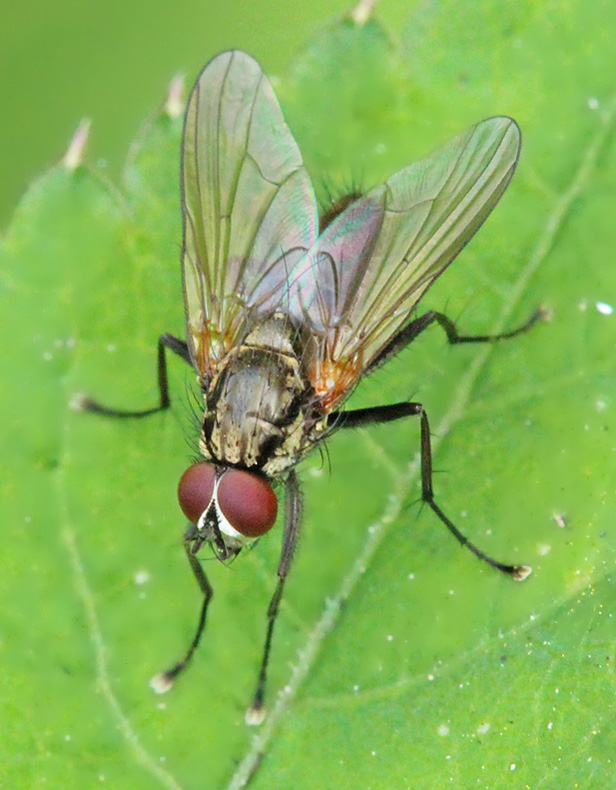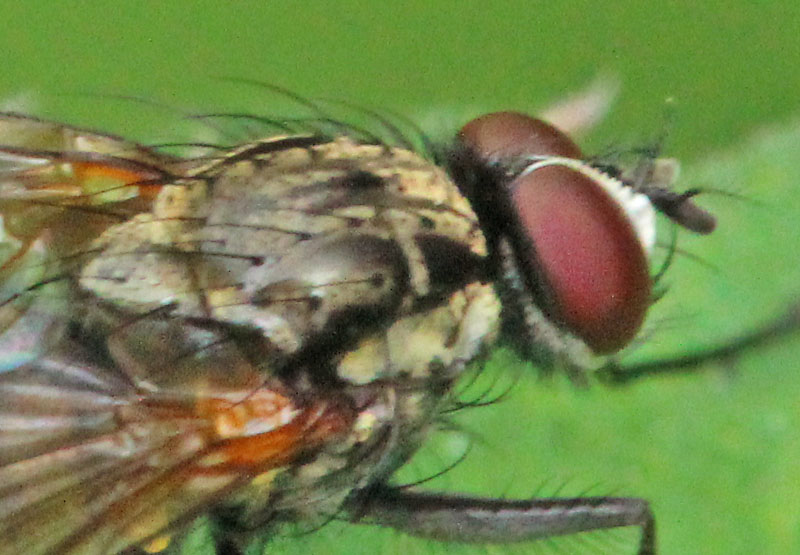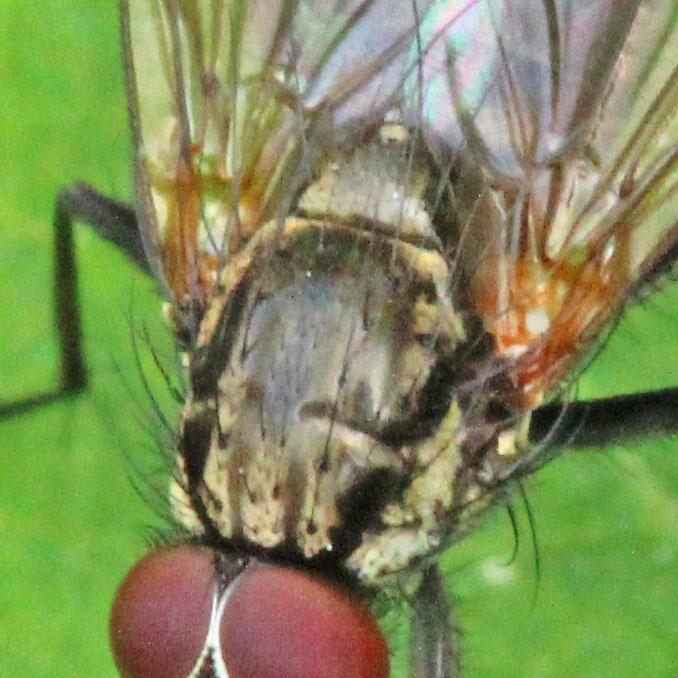Diptera.info :: Identification queries :: Diptera (adults)
|
Anthomyiidae for ID, N Spain
|
|
| Piluca_Alvarez |
Posted on 29-05-2012 18:53
|
|
Member Location: Madrid, Spain Posts: 2431 Joined: 06.11.10 |
Taken in N Spain, near San SebastiŠn, by a road in decidous forest on the 26th May 2012. I think it might be Hylemya. Confirmation or correct ID will be most welcome 
Piluca_Alvarez attached the following image:  [171.83Kb] |
|
|
|
| Piluca_Alvarez |
Posted on 29-05-2012 18:54
|
|
Member Location: Madrid, Spain Posts: 2431 Joined: 06.11.10 |
Another view.
Piluca_Alvarez attached the following image:  [158.49Kb] |
|
|
|
| Stephen R |
Posted on 30-05-2012 10:36
|
|
Member Location: Clitheroe Lancashire UK Posts: 2396 Joined: 12.06.09 |
Similar to Hylemya, but this one is Hydrophoria. H. lancifer(/diabata). |
|
|
|
| Piluca_Alvarez |
Posted on 30-05-2012 20:55
|
|
Member Location: Madrid, Spain Posts: 2431 Joined: 06.11.10 |
Thanks a bunch, Stephen!!  It seems diabata hasn't been ever reported in Spain. So, till any proof exists of the presence of diabata in Spain, I guess we can call this one lancifer  |
|
|
|
| Michael Ackland |
Posted on 31-05-2012 09:50
|
|
Member Location: Dorset UK Posts: 680 Joined: 23.02.08 |
Not Hydrophoria lancifer, I am afraid. The scutellum is bare on disc. Or Hylemya vagans as the legs are completely black. Can't see enough other characters to suggest what it is. |
|
|
|
| Stephen R |
Posted on 31-05-2012 10:27
|
|
Member Location: Clitheroe Lancashire UK Posts: 2396 Joined: 12.06.09 |
I thought the scutellum looked uniformly haired in both images, and I took the hairs between the presutural acrostichals as further confirmation that it couldn't be Hylemya. Enlarging the second image shows the plumose arista. The long pre-alar seemed to fit H. lancifer too. |
|
|
|
| Piluca_Alvarez |
Posted on 04-06-2012 13:24
|
|
Member Location: Madrid, Spain Posts: 2431 Joined: 06.11.10 |
Sorry for the late reply, Michael and Stephen  And thanks a bunch for your input And thanks a bunch for your input   I am adding a couple of pictures showing a little more detail, but quality is so dreadful that I doubt this is going to be of any help 
Piluca_Alvarez attached the following image:  [111.16Kb] |
|
|
|
| Piluca_Alvarez |
Posted on 04-06-2012 13:25
|
|
Member Location: Madrid, Spain Posts: 2431 Joined: 06.11.10 |
And another poor quality picture  
Piluca_Alvarez attached the following image:  [125.81Kb] Edited by Piluca_Alvarez on 04-06-2012 13:26 |
|
|
|
| Stephen R |
Posted on 04-06-2012 17:58
|
|
Member Location: Clitheroe Lancashire UK Posts: 2396 Joined: 12.06.09 |
Almost everything I think I know about Anthomyiidae comes from applying Michael's keys, so I'm not well placed to challenge his judgment. But perhaps this time bonus dormitat Homerus? |
|
|
|
| Michael Ackland |
Posted on 05-06-2012 09:37
|
|
Member Location: Dorset UK Posts: 680 Joined: 23.02.08 |
Now we have some enlarged photos I agree that the small setulae between acrostichal setae, and also on scutellum, are visible. So it's probably Hydrophoria. But the all black legs do not agree with lancifer? |
|
|
|
| Stephen R |
Posted on 05-06-2012 11:10
|
|
Member Location: Clitheroe Lancashire UK Posts: 2396 Joined: 12.06.09 |
Thank you for returning to this, Michael. It is very salutory to come under examination from time to time! I've noticed that the appearance of thinly pigmented legs in photographs is very dependant on lighting and angle of view. In this case we mostly see the tibiae in a foreshortened view and in diffuse lighting, both of which tend to reduce the effect of translucence. Where we have a more favourable angle, as with the mid tibia in the first image, the yellow colour starts to appear, and with strong back-lighting the appearance would be different again. Given what we can see (albeit not very clearly) of the abdominal tergites and the pre-alar seta, do you think H. silvicola (the other dark-legged species in your key) is a possibility, or are there non-British species we should consider for Northern Spain? |
|
|
|
| Piluca_Alvarez |
Posted on 05-06-2012 21:22
|
|
Member Location: Madrid, Spain Posts: 2431 Joined: 06.11.10 |
Thanks once more, Michael and Stephen, for your interest on this fly and your replies  There are 4 species of Hydrophoria recorded in Spain: lancifer, linogrisea, ruralis and silvicola. But I have checked all the dreadful pictures I have and one in particular shows the legs in better angle. I guess it is clear now   and it should be lancifer and it should be lancifer 
Piluca_Alvarez attached the following image:  [154.16Kb] Edited by Piluca_Alvarez on 05-06-2012 21:23 |
|
|
|
| Jump to Forum: |












